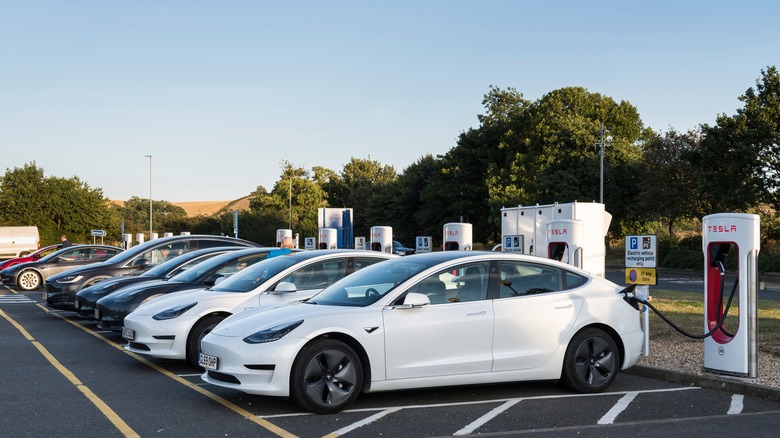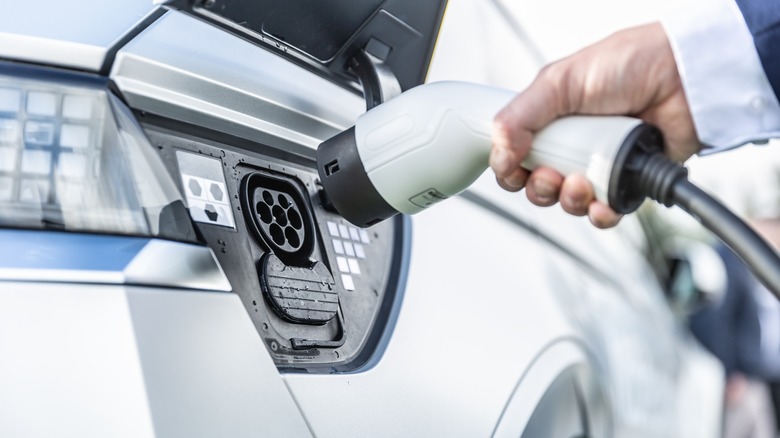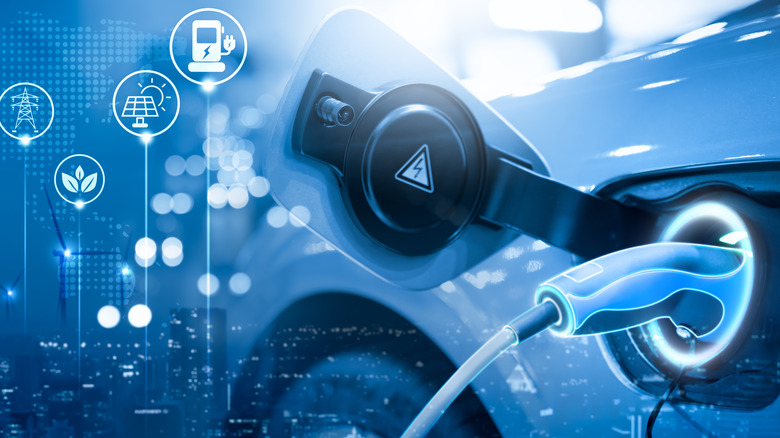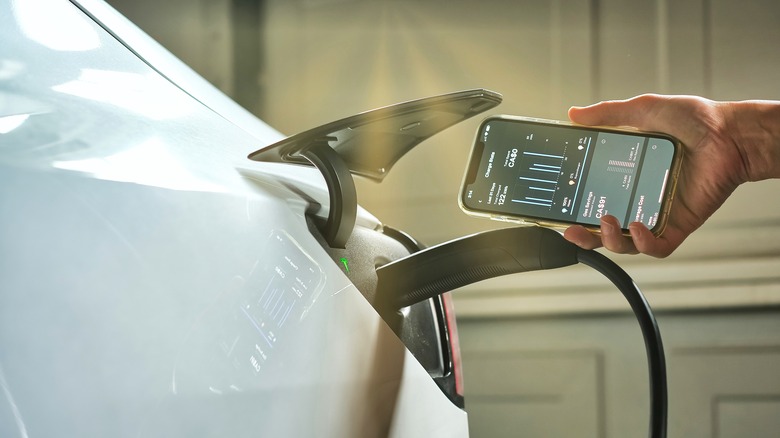How To Change Your Tesla's Charge Limit, And Why You Might Want To
A Tesla comes jam-packed with technology and a variety of impressive gadgets and plugins. One of these tools that Tesla owners can take advantage of is the charge limit function. Limiting an EV's maximum charge might seem counterintuitive, but the results speak for themselves. Tesla notes that you can set your charging limit at any level and that the new setting will take immediate effect – applying to the current or next charge. Tesla also recommends fully charging your battery once per week, even if you regularly maintain a lower maximum threshold – as others advise for routine juicing of the battery.
Setting a charging limit can help you maintain better energy cost efficiency, and this practice can even support a longer battery lifespan. Furthermore, a lower charge threshold setting will condition you to better long-term range management in the car. All of these factors combine to make the charging limit a must-use feature for any Tesla you park in your garage.
EV batteries suffer from steady capacity loss over time
Capacity loss is a scourge of battery makers across industries, not just in the EV space. Any rechargeable battery you've relied on has seen a drop in max output over time, from a handheld gaming device to an electric toothbrush you might use every morning.
GeoTab notes that a study of 6,000 EVs found an average loss rate of 2.3% each year of use among electric vehicles' battery packs. It's this feature that makes buying a used electric vehicle such a gamble. Charging and discharging your EV multiple times (perhaps more than once daily) results in an overall loss of maximum output, so keeping your EV regularly below total capacity can help you manage this drop-off more effectively.
By limiting your maximum charge to 80% or even 90%, you'll effectively eliminate the range decline that naturally occurs during the first several years. This problem may not be a significant concern for a short time after purchasing the car. Still, by your fourth or fifth year, the reduction in capacity can eat away at the maximum range you've been conditioned to expect.
Limiting your car's charge can prolong household efficiency in many ways
Everyday Chris notes that fully charging your Tesla battery every time you've finished driving can deplete your battery efficiency faster. Instead, it's best to limit the maximum charge capacity to around 70% or 80% for everyday use. This level of charge will be more than capable of seeing you run errands or commute to work and back without issue. The Tesla Model 3 is the brand's lowest performer (via Tesla), outputting a full charge range of 272 miles (though their other models are some of the longest-range EVs available). At 70% capacity, this still provides a full range of 190 miles, far outpacing the average of 41 miles that the daily commuter covers on a routine basis, according to Zippia.
In addition to a healthier battery, setting a charge limit can also be an effective way to maintain an equilibrium for your household finances. Setting a charge limit will ensure you aren't giving your battery a charge you don't require for daily driving. This practice will also mean you aren't wasting money on EV charging. Electricity costs can be expensive, and putting in a full charge you don't need is just throwing away money. EV ownership differs from a traditional commuter vehicle, so you must think differently about mileage.
Changing the limit is best done in your Tesla app
Setting a charge limit can be done in one of two ways. You can use the slider to select a charging limit in the settings screen on your Tesla's center console. This is a simple means of quickly changing the charge settings, but Everyday Chris reports that this process doesn't include percentages on the screen. This means you'll be guessing about the precise level of charge that your wall unit is pumping into the car. However, if you need to set the charge back up to 100% overnight before embarking on a road trip, this can be an easy way to get the job done.
Instead, Everyday Chris suggests using the Tesla app on your phone. With the app, you can see precise measurements and set a charge limit based on a percentage you select (rather than through guesswork on a slider positioned over a rendering of the car itself on the center console).



